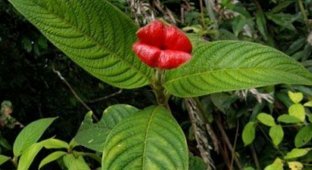Frankly speaking, people who are inexperienced in long-distance travel and who are not gourmet gourmets will be surprised by the abundance of unfamiliar names and the place where these fruits are grown.
We, of course, consider ourselves precisely to this “stratum” of society. We are sure that even if you have really visited all corners of the world, you haven’t had time to try some of the things listed. Interesting facts can be hidden in exotic fruits


1. So, let's start with the more or less famous guava, which grows in South and even North America. It is rich in vitamins A and C, and its taste can vary from sour to sickly sweet, as well as the color of the pulp from white to greenish and scarlet.

2.

3.

4. Barbados cherry is a unique plant whose fruits contain more vitamin C than, for example, oranges. The very juicy Barbados cherry grows in Central and South America, as well as Australia and several African countries.

5.

6.

7. Longan is an evergreen tree, also known as the "Dragon's Eye". Grows in the southeastern part of Asia. The whitish translucent flesh and brown seed really give the impression that this is the eye of a dragon. The pulp is very juicy and sweet, contains a large amount of amino acids necessary for human skin.

8.

9.

10.

11. One of the largest fruit trees in the world is jackfruit. Its weight can reach 34 kilograms, with a length of up to 90 cm and a diameter of up to 20 cm. It grows in India, Bangladesh, the Philippines, South and Central America, as well as in Oceania and eastern Africa. Jackfruit contains more starch than traditional bread. Unripe fruits are cooked like vegetables, and ripe ones are cooked like fruits.

12.

13.

14. Black sapote is very close to persimmon. Grown in Central and South America, as well as Oceania and the Philippines. The pulp of the ripe fruit tastes like chocolate pudding, but is much juicier.

15.

16. Mexican plum is a very juicy and aromatic fruit that grows not only in Mexico but throughout Central America, as well as many countries in South America. Popular in Nigeria and the Philippines.

17.

18. Chinese lychees taste very much like grapes. The only taste difference is a slight astringent aftertaste. They contain a high percentage of nicotinic acid, which prevents the development of atherosclerosis. A very popular fruit in Southeast Asia.

19.

20. Literally everyone knows mangoes and almost everyone has tried them. And for good reason. After all, it is believed that mango absorbs all the colors and aromas of the tropics.

21.

22.

23. Papaya is very sensitive to cold, so it does not spread beyond the tropics and subtropics. Behind the scenes it is called the jungle melon.

24.

25.

26. Silver bunchosia is a close relative of the Barbados cherry. Although the flesh inside is not so juicy, it is very sweet, reminiscent of dried figs in taste with a hint of peanut butter. They eat it fresh and make jelly and jam. Especially paired with a milkshake. Grows in Central and South America.

27.

28. Jamaican cherry in Central America is also called strawberry tree. However, Europe has its own strawberry tree, so we won’t confuse you. The pulp of the fruit contains a large number of seeds. Very sweet with a musky aftertaste. Grows in Central and South America.

29.

thirty.

31. Passion fruit is native to South America, although it now also grows in New Zealand, Oceania and Israel. The flavor is said to combine the flavors of pineapple, citrus and guava.

32.

33.

34. Sapota is popular in tropical America and Southeast Asia. Also called marmalade fruit due to the jelly-like texture of the pulp. The taste combines cherry-almond, creamy and sweet flavors. High potassium content.

35.

36.

37. Sweet pitaya is a relative of the cactus. The flesh is slightly fresh. It tastes best chilled. Grows in tropical America, Australia, Southeast Asia and Oceania. Overeating can be fraught with incidents.

38.

39.

40. Sapodilla has approximately the same distribution as the previous species. In addition to its taste and raw material for wine, it is known as a source of latex used to make chewing gum. The pulp of the fruit is very sweet and pleasant to the taste. It is used both fresh and for making sherbet and juices.

41.

42. Tamarind grows in almost all tropical countries on the planet and has several varieties. It is often called the Indian date. They are eaten fresh and also added to food as a seasoning. The pulp is rich in calcium, iron, thiamine and riboflavin.

43.






















